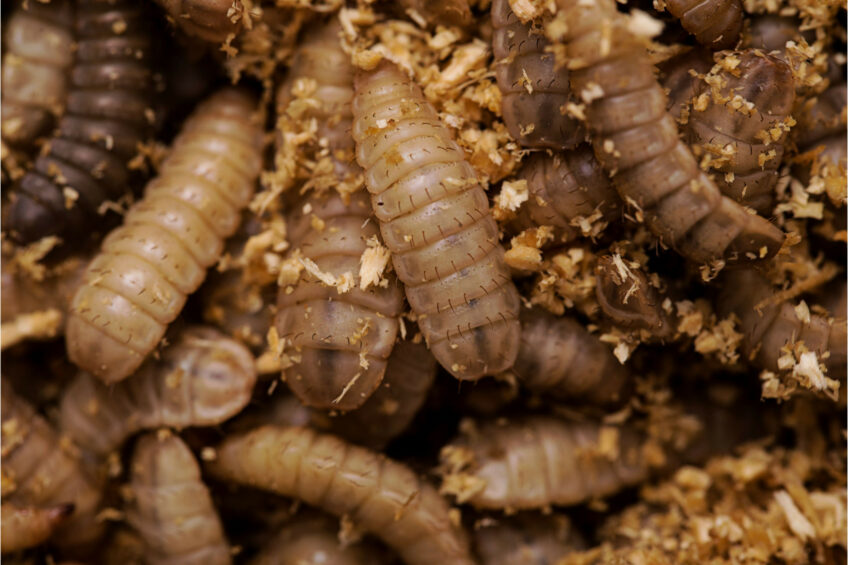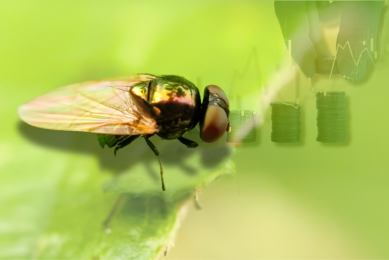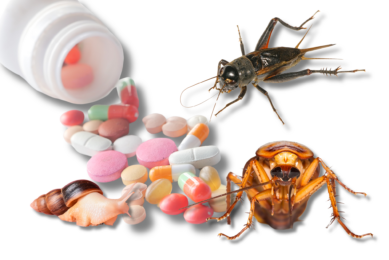Assessing safety of non-permitted waste streams for rearing insects for feed

Mass rearing of insect larvae for protein in animal feeds is an emerging technology that many believe will be vital in replacing the “protein gap” with a sustainable source. The use of waste streams to rear insect larvae is a further advantage of this technology, potentially revalorising waste that may otherwise be incinerated or moved to landfill.
The UK’s Food Standards Agency commissioned a study to provide chemical and microbiological data from a model insect rearing system (black soldier fly) using 4 currently non-permitted rearing substrates.
The materials selected for testing by consultants Fera Science were supermarket surplus containing animal by-products (ABPs), food processing surplus containing ABPs, kitchen waste from the hospitality containing ABPs and broiler poultry manure.
Samples of the rearing substrate, the larvae and the frass were subsequently taken for analysis of 745 chemical and microbiological contaminants (metals, veterinary medicines, pesticides, mycotoxins, PAH’s, nitrate/nitrite, PFAS, natural toxins, microbial organisms, viral RNA). Samples obtained from a UK insect producer currently using permitted rearing substrates were also included as a control.
Of the chemical analytes screened for, a total of 101 were found in the larvae, of which the majority (58) were metals. Of the analytes found, there were no exceedances for any of the chemicals where maximum limits are specific in feed materials of animal origin. However, some pesticide residues in larvae reared on supermarket surplus and poultry manure exceeded the MRLs for terrestrial invertebrates which may have implications if the larvae were to be used as food.
The presence of Enterobacteriaceae
The only regulatory limit exceeded for feed ingredients of animal origin was for the presence of Enterobacteriaceae in larvae reared on all 4 of the currently non-permitted substrates. The regulatory limit for Enterobacteriaceae in feed materials or animal origin is 300cfu/g. However, in this study for the currently non-permitted substrates only minimal processing was used to kill the larvae.
The larvae reared on the baseline samples complied with the regulatory limits for Enterobacteriaceae for feed ingredients of animal origin. These larvae were culled by blanching in boiling water and cooking until core temperature exceeded 75°C according to the producer’s protocols.
Fera Science say the results of the study illustrate that further processing of larvae is needed to reduce the microbial load. It is likely that processing methods typically used for the production of insect protein would significantly reduce the level of these organisms, but this would need to be confirmed and supported.
Bioaccumulation for some compounds
There was evidence of bioaccumulation in the larvae for some compounds. Cadmium was shown to bioaccumulate in BSF larvae as previously reported in other studies. There was also evidence of bioaccumulation of other metals including magnesium, calcium and phosphorus in larvae reared on both currently permitted and non-permitted substrates. Although this may not result in a direct safety concern, this may have implications for some metals that serve as macro or micro-nutrients in animal feeds.
The study also found evidence of bioaccumulation of didecyldimethylammonium chloride (DDAC) and haloxyfop in larvae reared on poultry manure. Other contaminants such as mycotoxins and PAHs also gave indication for potential bioaccumulation but variation between samples means that further testing would be needed to ascertain whether this is the case.
Further processing of the frass
Current European Commission regulations (142/2011) specifies that processed manure taken immediately after processing should comply with limits Salmonella spp. and Escherichia coli or Enterococcaceae in frass samples from all rearing substrates but was only exceeded for E.Coli in frass from catering wastes. These results indicate that further processing of the frass from currently permitted and non-permitted substrates is required to conform to regulatory requirements.
The non-targeted viral screen confirmed the presence of RNA from plant and animal pathogens in larvae and frass, but the infectivity of these viruses could not be elucidated from this study. The report authors say infection studies should be carried out to determine if this is a risk, particularly for plant pathogens when frass is used as a fertiliser.
Toxins
The non-targeted toxin screen demonstrated the presence of natural toxins such as solanidine. At present, there are no regulatory limits for the presence in animal feeds and an EFSA risk assessment concluded that a risk characteristic of potato glycoalkaloids in feed for farm and companion animals was not possible due to insufficient data on potential adverse effects. Data is therefore necessary on the presence of these compounds in a range of animal feeds before an assessment of the levels in insect larvae can be evaluated.
The Food Standards Agency said data would be used as a basis to assess the potential risk from use of these substrate materials in the context of rearing insects to produce protein for inclusion in animal feed.
The report can be found here.











